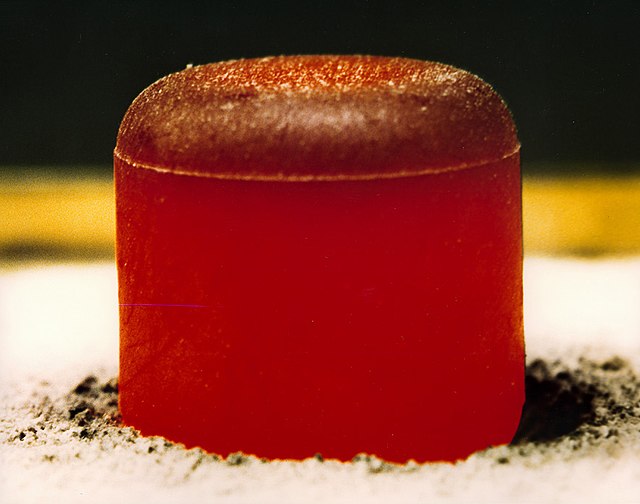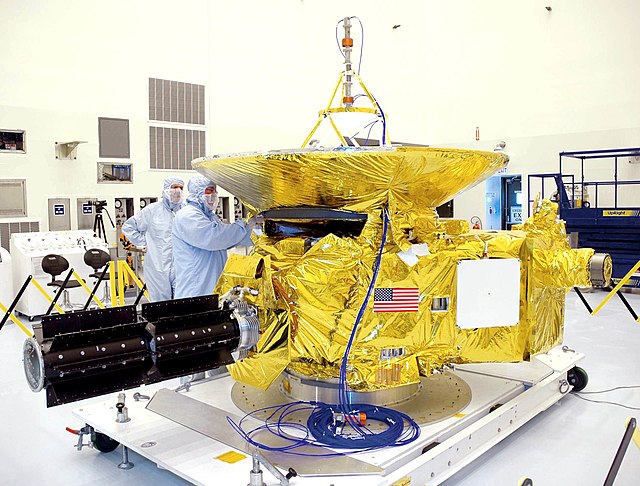A radioisotope heater unit (RHU) is a small device that provides heat through radioactive decay. They are similar to tiny radioisotope thermoelectric generators (RTG) and normally provide about one watt of heat each, derived from the decay of a few grams of plutonium-238—although other radioactive isotopes could be used. The heat produced by these RHUs is given off continuously for several decades and, theoretically, for up to a century or more.
RHU Photo of a disassembled RHU. RHUs use Pu-238 to generate about 1 watt of heat each.
Radioisotope thermoelectric generator
A radioisotope thermoelectric generator, sometimes referred to as a radioisotope power system (RPS), is a type of nuclear battery that uses an array of thermocouples to convert the heat released by the decay of a suitable radioactive material into electricity by the Seebeck effect. This type of generator has no moving parts and is ideal for deployment in remote and harsh environments for extended periods with no risk of parts wearing out or malfunctioning.
A pellet of 238PuO2 as used in the RTG for the Cassini and Galileo missions. This photo was taken after insulating the pellet under a graphite blanket for several minutes and then removing the blanket. The pellet is glowing red hot because of the heat generated by radioactive decay (primarily α). The initial output is 62 watts.
Inspection of Cassini spacecraft RTGs before launch
New Horizons in assembly hall
90Sr-powered Soviet RTGs in dilapidated condition.





